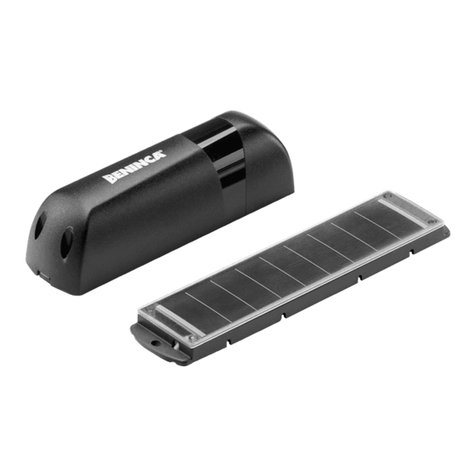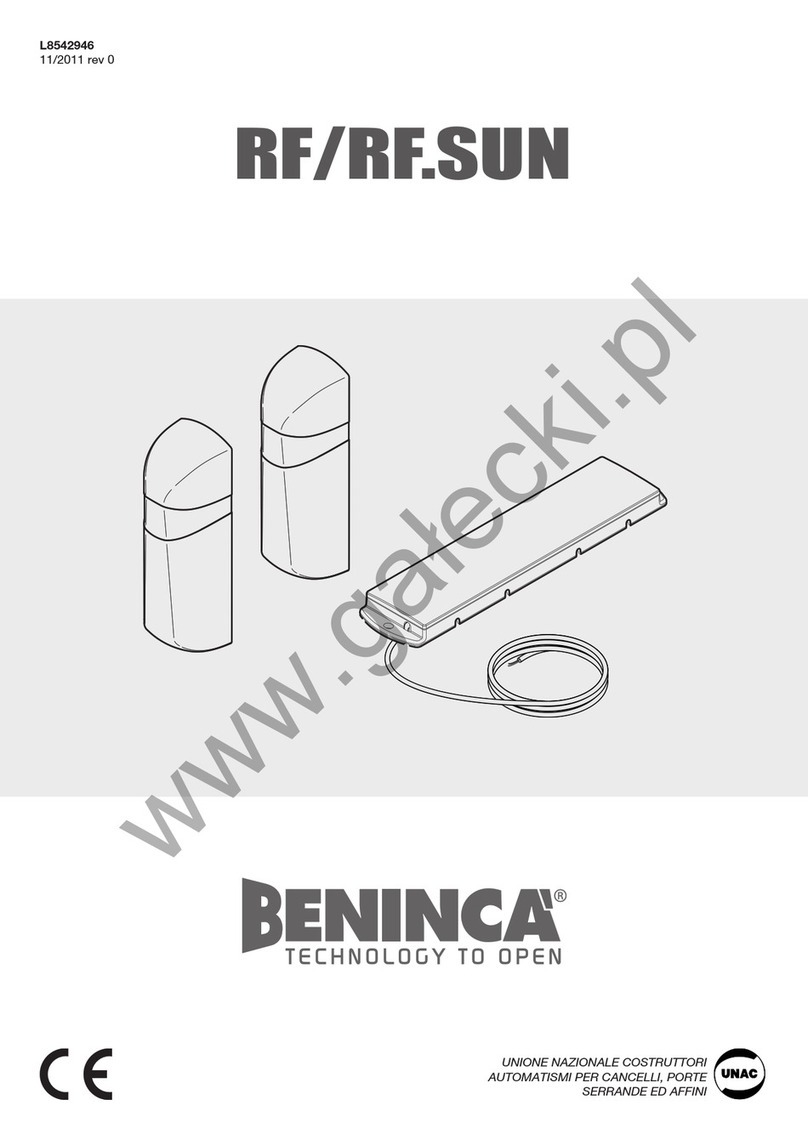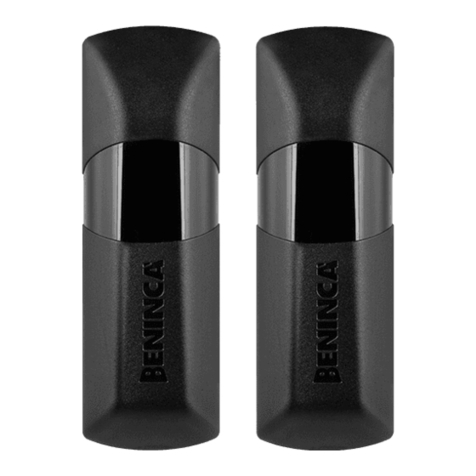
LED DI SEGNALAZIONE
Il LED 2 evidenziato in Figura 3 svolge la funzione di diagnostica del dispositivo.
Premere brevemente il tasto S1:
- se il led inizia a lampeggiare, significa che il bordo sensibile non rileva ostacoli
- se il led si accende con luce fissa, significa che è stato rilevato un ostacolo. Il trasmettitore sta inviando il
segnale di allarme al ricevitore.
AVVERTENZE IMPORTANTI
Per il corretto funzionamento è importante osservare scrupolosamente quante segue:
1 Il pannello solare deve essere installato in una posizione ben esposta ai raggi solari, con il pannello tra-
sparente rivolto verso l’alto.
2 Verificate che nel corso della giornata il pannello non cada in una zona ombreggiata (alberi, edifici, ecc).
3 Mantenere periodicamente pulito il pannello solare da polvere e sporcizia.
4 Migliore sarà l’esposizione del pannello, migliori saranno le prestazioni e l’affidabilità del dispositivo.
Nel caso di installazione in luoghi scarsamente soleggiati, è possibile collegare 2 pannelli solari in
parallelo.
5 Il sistema correttamente installato e mantenuto in perfetta efficienza è in grado di funzionare per un pe-
riodo molto prolungato, al termine del quale sarà comunque necessario sostituire la batteria, a causa del
raggiungimento del numero massimo di cicli di ricarica.
6 Il dispositivo correttamente installato e manutenzionato consente il rispetto del grado di sicurezza previsto
dalle normative vigenti. Tuttavia il produttore declina ogni responsabilità per qualsiasi danno provocato a
persone o cose causati da errata installazione, errata manutenzione, utilizzo improprio o non corretto del
dispositivo.
AVVERTENZE
L’installazione dei dispositivi di sicurezza e la loro verifica funzionale deve essere effettuata esclusivemente
da personale qualificato nel rispetto delle normative vigenti.
I dispositivi di sicurezza devono essere fatti conoscere a tutte le persone appropriate. Le aree che danno
accesso ai dispositivi devono essere tenute libere da ostacoli.
Qualsiasi modifica ai collegamenti e alla configurazione dell’impianto deve essere effettuata esclusivamente
da personale qualificato, autorizzato dal costruttore.
In caso di arresto di emergenza il sistema, una volta rimosso l’ostacolo, si autoripristina. In caso di mancato
ripristino verificare il corretto cablaggio della SC.RF e lo stato di carica della batteria del dispotivo mobile.
Utilizzare esclusivamente parti di ricambio originali, fornite dal costruttore.
Al termine dell’installazione le marcature che contraddistinguono il prodotto devono rimanere visibili.
MANUTENZIONE
I dispositivi di sicurezza devono essere mantenuti in condizioni di lavoro efficienti e mantenuti in accordo
con le istruzioni del fabbricante.
Periodicamente controllare:
- le batterie dei dispositivi mobili, nel caso procedere con la loro sotituzione.
- la pulizia del pannello solare eventualmente pulire con un panno leggermente inumidito, non utlizzare
solventi per la pulizia.
SMALTIMENTO
Qualora il prodotto venga posto fuori servizio, è necessario seguire le disposizioni legislative in vigore al
momento per quanto riguarda lo smaltimento differenziato ed il riciclaggio dei vari componenti (metalli,
plastiche, cavi elettrici, ecc.); è consigliabile contattare il vostro installatore o una ditta specializzata ed
abilitata allo scopo.






























